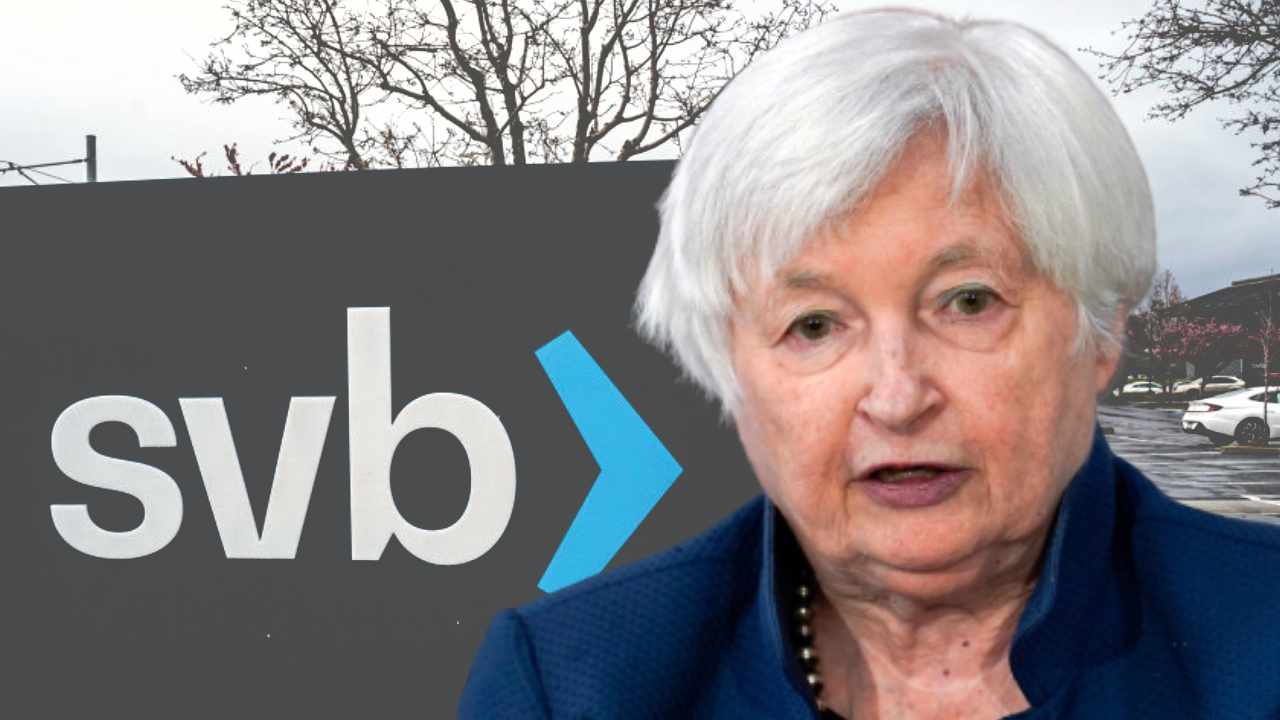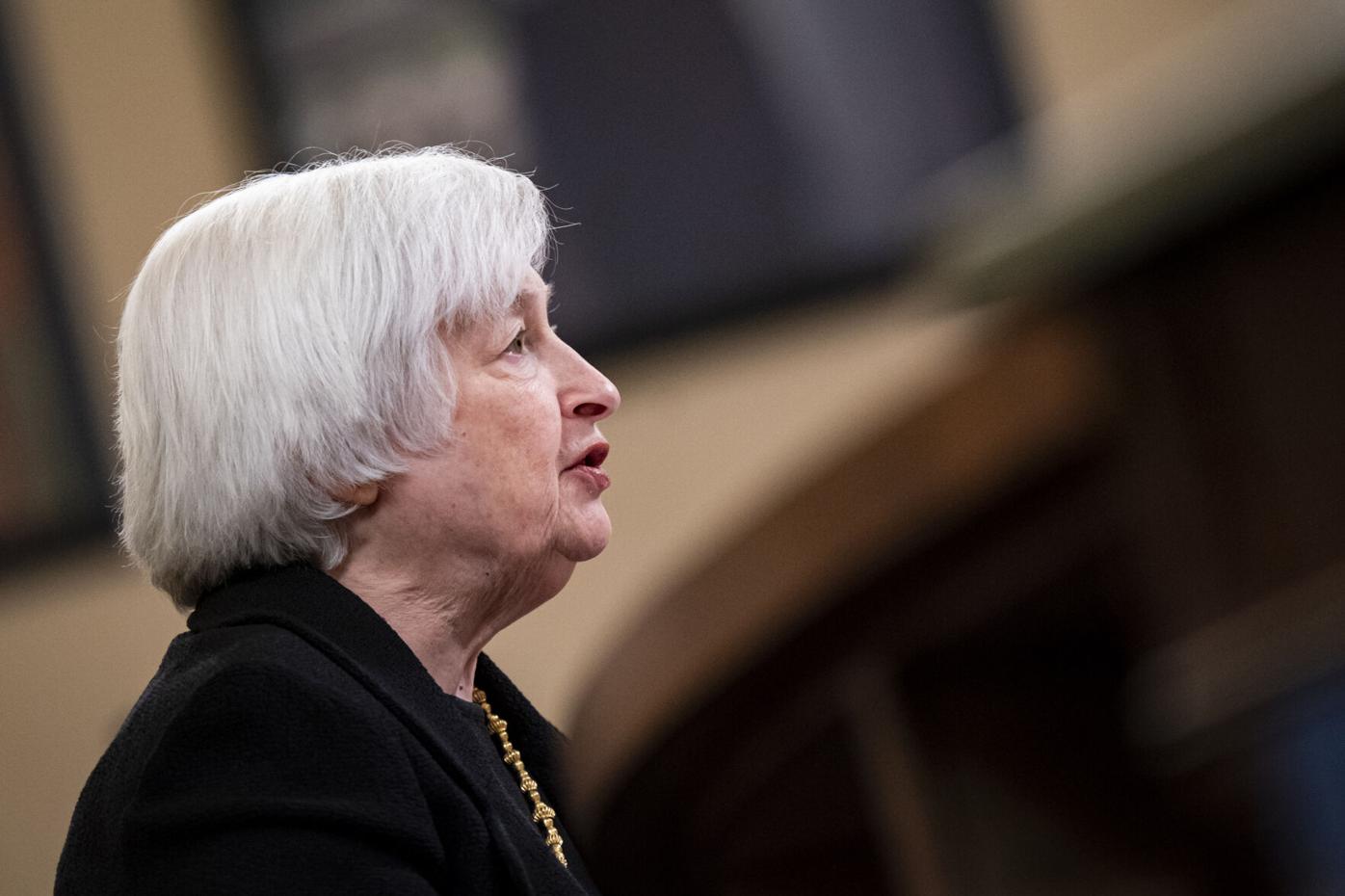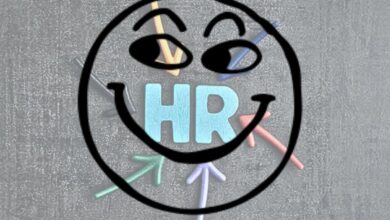Janet Yellen Declares That The Defunct Silicon Valley Bank Will Not Receive A Bailout.
16th-largest bank in the US is Silicon Valley Bank, which is headquartered in Santa Clara, California. With the Failure of Washington Mutual in 2008, it was the second-largest bank failure in American history.

According to Treasury Secretary Janet Yellen, the federal government won’t save Silicon Valley Bank, but it is attempting to help depositors who are concerned about their money.
Although the bank was well known for its links to technological companies and venture capital, the Federal Deposit Insurance Corporation only insures deposits up to $250,000, thus many firms and wealthy clients had more money in their accounts than that. There are concerns that some workers around the country won’t get paid.
Yellen provided little detail on the government’s impending moves during an interview with CBS’ “Face the Nation”. She emphasized, however, that the present situation was fundamentally different from the financial crisis, which happened nearly 15 years ago and led to bank bailouts to protect the industry. We won’t repeat that, she vowed. Yet we are making a concerted effort to attempt to satiate depositors’ needs.
The 16th-largest bank in the US is Silicon Valley Bank, which is headquartered in Santa Clara, California. With the Failure of Washington Mutual in 2008, it was the second-largest bank failure in American history. The majority of the clients the bank handled were venture capital-backed businesses, including some of the most well-known names in the sector.
The Silicon Valley Bank started to fall as a result of its clients, particularly technological companies, who needed money while they fought to get financing, withdrawing their deposits. The bank had to sell bonds at a loss to repay the withdrawals, which resulted in the worst financial institution failure in the United States since the height of the financial crisis. According to Yellen, the Federal Reserve’s increased interest rates to combat inflation is Silicon Valley Bank’s top concern.
Some of its assets, including bonds and mortgage-backed securities, lost market value when interest rates rose. She said that the IT sector is not the main reason for the problems at this bank. Yellen predicted that regulators will consider “a wide range of plausible alternatives,” including the possibility of another institution purchasing Silicon Valley Bank. Yet, no bidder has yet to step forward.
Nearly all bank failures that took place during the financial crisis of 2008 were “sold to a strong bank,” according to Sheila Bair, who was the FDIC’s chief at the time. The best outcome would be for the healthy acquirer to cover the uninsured as well, since they were interested in the franchise value of those sizable deposits. Yet, she asserted that they were unable to prepare to promote the bank in sufficient time due to Silicon Valley Bank’s liquidity issue and a subsequent bank run. Due to the necessity of doing that, they are presently playing catch-up.
Regulators seized the bank’s assets on Friday. Deposits that are federally guaranteed should be available on Monday morning. “I’ve been working with our banking regulators all weekend to find appropriate steps to tackle this situation,” Yellen said. She answered, “I really can’t offer you any more information at this time.
Speaking on Fox News Channel’s “Sunday Morning Futures,” House Speaker Kevin McCarthy, a Republican from California, expressed his expectation that the administration will reveal the next steps as soon as Sunday. He stated, “They are trying to try to come forth with some statement before the markets open. They do have the means to manage the current situation; they do recognize the importance of this. McCarthy also voiced optimism about the acquisition of Silicon Valley Bank.
I think moving forward, calming the markets, and letting people know that we can move on the right would be the perfect outcome, he continued. Republican congressman. All depositors must receive government assurances, according to Khanna, and they must “have full access to bank accounts Monday morning.” Khanna signifies a region that contains the city where the bank’s headquarters are located.
In an interview with ABC News’s “This Week,” Sen. Mark Warner, D-Va., expressed his fear that the bank’s failure would cause worried consumers to shift money from smaller neighborhood banks to bigger institutions. Reimbursing depositors in excess of the $250,000 cap, according to Warner, would present a “moral hazard,” and the wisest course of action would be to make an acquisition.
He said, “I’m more upbeat this morning than I was at this time yesterday afternoon. But once more, we’ll have to wait until later in the day to see how this develops. “How do we make sure there isn’t a contagion,” he continued, “is what we’ve got to concentrate on right now.”
On Saturday, President Joe Biden and Democratic California Governor Gavin Newsom discussed “efforts to resolve the problem,” but the White House did not offer any further information on what will happen next. “Stabilize the situation as rapidly as possible, to safeguard employment, people’s lives, and the entire innovation ecosystem that has acted as a tent pole for our economy,” Newsom said, adding that this was the objective.
The Silicon Valley Bank started to fall as a result of its clients, particularly technological companies, who needed money while they fought to get financing, withdrawing their deposits. The bank had to sell bonds at a loss to repay the withdrawals, which resulted in the worst financial institution failure in the United States since the height of the financial crisis. According to Yellen, the Federal Reserve’s increased interest rates to combat inflation is Silicon Valley Bank’s top concern.
Millions of dollars in Indian entrepreneurs’ accounts at Silicon Valley Bank are being considered for bulk removal.
While waiting for American business hours to begin on Monday, Indian businesses with millions of dollars trapped at the problematic Silicon Valley Bank may withdraw all of their funds at once. According to the founders, the only way this may be avoided is if the US government is successful in finding a buyer for the troubled bank.
Businesses having accounts at Silicon Valley Bank (SVB) will now have complete access to their deposits thanks to a move made by the US government on Sunday night, as opposed to a prior policy that would have only made an insured sum of $250,000 immediately available. SVB had $209 billion in total assets as of December 2022 and around $175 billion in total deposits.
SVB’s UK subsidiary was sold to HSBC for £1, the Bank of England and the British government revealed on Monday morning, even though the US government is frantically trying to find a buyer for the bank. Finding a buyer for SVB was “the greatest conclusion,” according to Sheila Bair, former chair of the US Federal Deposit Insurance Corporation (FDIC), which took control of the bank after it, was closed.
A founder whose startup is supported by the US-based technology accelerator YCombinator (YC) was asked if he would withdraw his entire firm’s money from SVB. He responded that he would if the US government was unable to find an organization that would acquire SVB. Despite the fact that the US government has stated that it will implement a backstop measure so that depositors can access all of their funds at the bank.
Impact on India
Even though the British branch of SVB was successful in finding a buyer in the UK, Indian entrepreneurs are more likely to have placed their funds with the New York-based SVB, which is situated in the US. The effects of SVB’s failure can be widespread. In the next few days, startups could not afford to pay their staff, and venture capital companies might not be able to raise money.
Additional loans
The Federal Reserve of the United States declared on Sunday night that it would make additional loans available to eligible banking institutions to help ensure that banks have the capacity to meet the needs of all of one‘s account holders, as opposed to a full government bailout that would have required tax payer’s money.
Banks, savings organizations, credit unions, and other qualified depository institutions will be able to apply for loans through a new organization called the Bank Term Financing Program (BTFP), which will provide loans of up to one year in length.
The service will require users to put up premium collateral, such as Treasury securities, agency debt, and mortgage-backed assets. As a safety net for the BTFP, the Department of the Treasury will make up to $25 billion from the Exchange Stabilization Fund accessible. The Federal Reserve asserted that it did not believe it would be essential to use these backup funds.
Edited by Prakriti Arora




